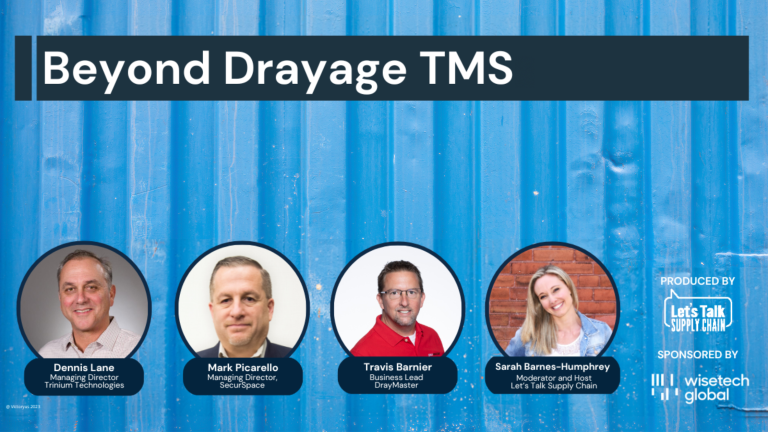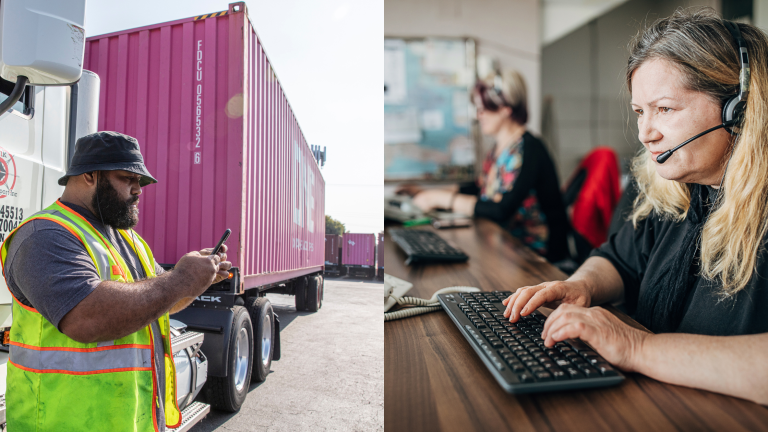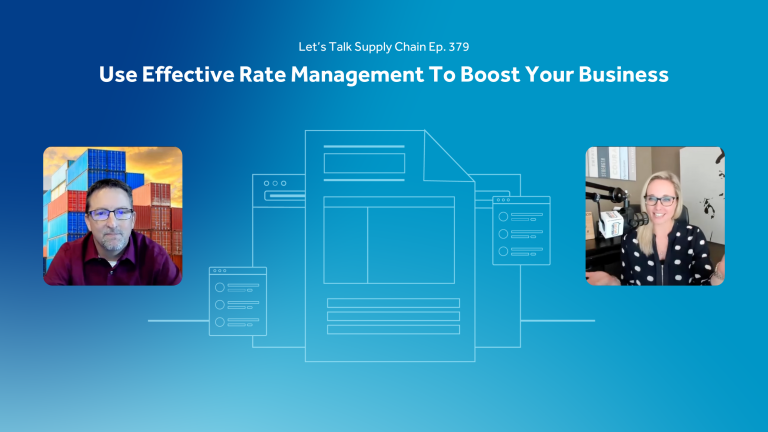Cloud-based Transportation Management Systems give power and flexibility to work wherever you are.
Business isn’t just done behind a desk or behind the wheel. You get business done where you happen to be. Our phones and laptops give us the freedom to work wherever we are. We don’t need to be tied to an office phone or desktop computer.
Except for many TMS solutions.
Transportation Management Systems have typically been installed on a desktop computer. There is a lot the system needs to juggle and a desktop computer made sense—at the time.
And that time was twenty years ago.
Fast wireless internet—even over cell networks—and powerful laptops let us bring the office with us. And yesterday’s TMS has evolved too. As long as you can connect to the internet, your TMS is wherever you are.
Your TMS has moved to the cloud and has even changed how you pay for it—all for the better.
What Cloud-Based Software as a Service is
When we say an application is “in the cloud” it means all the files, data, and parts of the program are stored on servers on the internet. We used to install all programs on our computers. We didn’t have a choice. The internet wasn’t very fast and programs worked better when they ran from a computer.
Today we install some programs on our computers—your web browser you’re using to read this for example—but today we can use the same web browser to read a blog post and much more. If you’ve checked your email through your browser, you’ve used cloud-based software. If you’ve done your taxes online, cloud-based software.
The software as a service (SaaS) part is how you pay for the software. Software as a service is like a magazine subscription. You pay for the magazine to come to your house, but when you decide you don’t want to get it any more, you cancel the subscription and that’s it.
SaaS solutions (and almost all SaaS solutions are cloud-based) work the same way. Instead of buying a program to install on your computer—which is a one-time purchase—you pay a monthly fee to “rent” the program.
And renting comes with some serious benefits.
Because SaaS solutions are in the cloud, if you have a computer with a web browser, you can use the app. You don’t have the “oh crap” moment when you realize you don’t have something installed on your computer. You open your browser, log in, and work. That’s it.
You don’t have to invest in big servers to install the solution in your office. You don’t need a team of IT people to keep those servers updated, running, and secure. SaaS means freedom from being tied to your office to get things done.
Over 50% of all software today is offered as software-as-a-service (SaaS). This isn’t a fad or the next 8-track tape player. SaaS is a proven solution and lets you:
- Access your business information whether at the office, at home, or traveling
- Access it across different devices (desktop, laptop, tablet…)
- Avoid large capital investments in servers and expensive IT staff
- Grow as you need, not how a company wants to sell something to you
SaaS solutions give you all the benefits of installing programs on machines, but need less from you to work and run.
Get Off the Maintenance and Upgrade Train
Software-as-a-Service is exactly that—a service. You don’t get hit with “oh you’ll need to upgrade to get that feature” or annual maintenance agreements and contracts that land with a thud on your desk.
Rather than paying 25% of your original purchase price for annual software upgrades and bug fixes, you get the latest version every time you login—at no extra cost. Because SaaS solutions automatically update features—and fix bugs—constantly. You don’t have to fight with something that’s out of date—or even not supported anymore because you didn’t upgrade—you’re always up to date. No waiting.
And did we mention you don’t have to buy a ton of new computers?
Low or No Capital Investment
In the past when you bought a big software system you needed to pay for:
- The software
- The maintenance
- Servers to run it
- New computers capable of running the software on
- People to set up and configure the software
- People to keep everything running
And when it’s time to upgrade, you get to repeat all of that expense. Inevitably the older machines you’ve been using aren’t powerful enough to handle the new versions, so you need to upgrade all of those.
And sometimes the “upgrade” is just as complicated as the initial setup, so you need people to help you with that.
SaaS solutions have none of those issues. The software runs on someone else’s servers. SaaS apps are designed to run through a web browser, you don’t need the latest and greatest computers to use it.
You might need help getting set up the first time, but the process is much shorter, much faster, and much less costly. And keeping things going? You don’t have to worry about it – it’s handled.
And a note on security.
One of the hardest things for businesses today is keeping computers and servers safe from hackers. When you run your own servers, it’s enough to keep you up at night worrying if your IT team has a handle on it. SaaS companies have hundreds of customers to worry about. They take protecting their servers and your data very seriously.
Moving to SaaS solutions for core systems is like putting your money in a bank instead of a safe in your office. A bank is much better protected than your safe could ever be.
SaaS Grows With You
“So, how many copies do you need?” This might be one of the hardest questions people have to wrangle when buying software the old way. Do I need one per person? One per office? If someone has a desktop in an office, but works from a laptop on the road is that one or two copies?
SaaS solutions are simple. How many people are going to use it? That’s it. And if you need more licenses, just add them. There isn’t another fee to install it. There isn’t worrying if your servers can handle another person. You don’t have to worry about updating services with license keys.
The new person gets an account and they get to work.
Work From Any Device
In the old days, you’d have to buy a license for every single device people might use an app from. If you have field sales with multiple devices or people who work from both home and the office, those extra licenses add up.
Not with SaaS. One account lets you use any computer—or phone or tablet—that can connect to the internet. No extras charges. No extra user licenses. No more having to decide who gets to work where because you have to pay for extra licenses.
Work is where you are. Not where your desk is.
Not Another Data Silo
A true web-based SaaS TMS connects to other systems you rely on. IT can use an Application Program Interface (API) layer to connect your TMS to other parts of your business. Leveraging APIs, a SaaS TMS plus your existing systems becomes a 2+2=5 solution.
Price
The hallmark of SaaS solutions is transparent pricing. You know exactly what you’re getting into without hidden charges or fees. There isn’t a surprise with “oh yes, that’s the new customer fee,” you know what the upfront and monthly costs are even before you agree to try the solution.
Want to compare plans to see which is right for you? Great! Want to talk about how you can move from one to another? Please! The goal of SaaS pricing is making selecting and using a TMS as easy as possible.
No roadblocks. No long implementation times. No convoluted maintenance contracts. Simple pricing that makes sense.
Ready to See it in Action?
Ready to see how it works and learn more? Our cloud-based SaaS TMS is changing how the intermodal trucking industry is getting work done. We’re leveling the playing field for everyone so work gets done and shipments get delivered.
And everyone’s businesses keep growing. Contact us to learn more.




